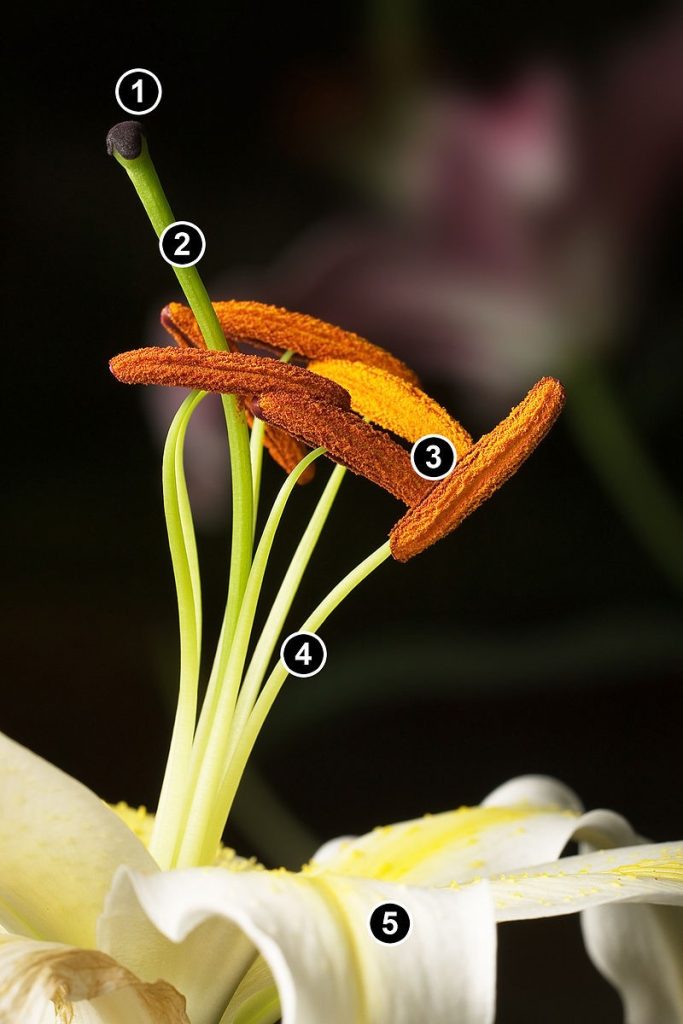14.3 Plant Sex
The sexual organs of flowering plants are located in their flowers (think about that the next time you are smelling roses). Plants are rooted to the ground or to other structures; this fact makes finding a mate a challenge. Specifically, male gametes, or sperm, often cluster into pollen grains; these pollen grains must get close enough to female gametes (eggs) to enable fertilization. Flowering plants use various strategies to deal with the challenge of immobility. Some plants rely on water (in the case of some aquatic plants) or wind to achieve fertilization. In these plants, pollen from male flowers is specialized to be highly mobile. Other plants rely on the movement of animals (called pollinators) to move pollen to another plant. Pollinator animals include many insects, birds, mammals, and even some lizards. If you can move pollen from one plant to another, you can help plants have sex.

A note about plant sex
Some plants (like asparagus, plum trees and holly bushes) have completely separate sexes (all the flowers on an individual plant each produce only sperm or eggs). These plants are dioecious. Some plants (like zucchini) have both male and female flowers that reside on the same plant. These plants are monecious. Some plants have both male and female parts in the same flower. These flowers, such as the lily flower pictured here, are perfect flowers. Plants that have both male and female parts on the same flower may employ one of several adaptations to prevent self-fertilizing (a type of extreme inbreeding). For more discussion of the differences in sexes see Chapter 7 on “Sex and Gender”. For more discussion on the evolutionary pros and cons of self-fertilizing, see Chapter 6 on “Why Sex?”

Once the pollen from the male portion of a flower (specifically, the anther) meets a stigma on the female portion of a flower, the pollen grain forms a pollen tube, through the female style, to the flower’s ovary. Once the ovary is reached the pollen grain releases two sperm cells. One fertilizes the egg cell, while the other fertilizes a diploid cell to create a nutrient-rich structure called an endosperm. This endosperm provides a source of energy to the developing plant embryo (As an aside, in plants that humans use as grain-food sources, these endosperms are the part we rely on for food. For example, in wheat plants the process of creating white flower involves isolating the endosperm from the rest of the grain).
- By Muhammad Mahdi Karim - Own work, GFDL 1.2, https://commons.wikimedia.org/w/index.php?curid=6575681 Bat feeding at a cactus flower By U.S. Fish and Wildlife Service Headquarters - Choeronycteris mexicana, Mexican long-tongued batUploaded by Dolovis, Public Domain, https://commons.wikimedia.org/w/index.php?curid=31315207 Hummingbird (the lesser violetear) feeding at a flower By Mdf, CC BY-SA 3.0, https://commons.wikimedia.org/w/index.php?curid=3872140 ↵
- Photo JJ Harrison (jjharrison89@facebook.com) https://en.wikipedia.org/wiki/Flower#/media/File:Lillium_Stamens.jpg ↵

